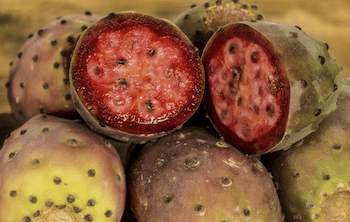
During the past decade, Morocco’s Prickly Pear Cactus has been receiving media attention for its ability to deeply hydrate the skin and protect hair. Recently, researchers around the globe discovered that the plant also contains the potential to aid with inflammation in tissues and joint pain. The Euphorbia Resinifera cactus (referred to as the prickly pear) contains resiniferatoxin (RTX), an active ingredient recorded by the Scoville Scale to be 10,000 times hotter than the Carolina Reaper, the world’s hottest pepper. Conceptually, a single injection of RTX into a targeted area will destroy pain in the nerve ending and communicate to the brain to stop signaling pain messages.
Morocco’s Prickly Pear Cactus May Revolutionize Pain Medicine
The news further development of the Prickly Pear is significant given it has the potential to help end the opioid crisis in America. In 2016, there were 42,000 recorded deaths from an opioid overdose. Unlike opioids, RTX has the potential to target areas and without it becoming addictive.
The Prickly Pear cactus grows up to two meters tall in the hottest and driest parts of Morocco, such as the Sahara Desert. In spite of these conditions, the cactus produces bright colorful flowers and delicious edible fruit. Its ability to persevere and thrive in challenging heat is a likely source of its potency.
